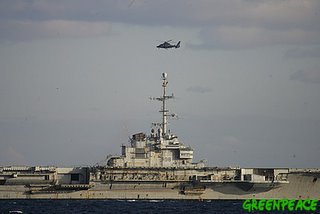Dasavatharam - Review
Everyone who watched the movie has an opinion. Well me too. I don't know if anyone cares to read my opinion, but I care to write:-) So here it is....
Basically a chaotic theory is one wherein long term predictions are impossible. Like for example, if I push a car, I know that it is going to move and it will continue to do so if I go on pushing it on and on. However, in a chaotic system, this situation cannot be predicted over a long period of time. Weather for example is a chaotic system. No matter how good your instruments are, you simply cannot predict the weather with 100% accuracy over a long term basis and forecast it. This is put forward by the butterfly effect which is the most important component of a chaotic system. Basically, small perturbations results in amplifications which completely destroys the original nature of the system and makes prediction impossible. If a butterfly flaps its wings in Africa, it could result in a cyclone in USA. (Mark the word COULD).
Now, the question arises: how does the film incorporate this? Basically, the movie talks about 9 characters who though unrelated to the principal character (Govind) as such, drive his destiny. Without Bush, the plane would have been turned back; if Kalfullah wouldn't have met Govind, Fletcher would have killed him very quickly. Each and every character drives Govind to the seashore, which when the tsunami strikes, is the right place to be, because the high content of salt in the roaring waves destroys the virus. This is the essence of chaos theory where totally unrelated incidents actually drive the world and affect one and all.
Now the question: how does Rangarajan Nambi (the first 15 min) fit into this puzzle? When the idol is submerged into the sea, the orderly nature of the sea and the sea bed is disturbed by a small amount. As per the butterfly effect stated above, the succeeding effects get amplified and ultimately result in a tsunami 800 years later. Kamal has applied chaos theory to plate tectonics which according to modern science is still under some debate.
So does the movie preach atheism or theism? Well, interestingly, the answer is neither. It simply tells that humans drive the destiny of the world. You may take it as you want to. The theists among us would say that the 12th century incident was engineered by God, to save the world from the deadly virus. The atheists and rationalists will say that separate incidents amplified and modified by chaos theory resulted in the tsunami which was both good and bad. All I can say is that both points of view are correct and I am sure your respective beliefs were reinforced at the end of the film. In my opinion, this is the brilliance of Kamal Haasan, the screenplay writer.
The movie also talks about Karma theory and the cycle of life and birth. One can consider Govind as a reincarnation of Nambi who dies failing to protect his ideology and is redeemed in the next birth by standing for what he thinks is right. Kothai and Nambi are separated at the idol and in the end of the movie the two are united at the same idol as Govind and Aandal. (this is not my imagination, but, Kamal has implied this is the re-recording and the idol's visuals.
Dasavatharam is not just an ordinary film. For the receptive people in the audience, it showcases the ideologies and beliefs that most human beings follow in their lives. Truly a masterpiece.



